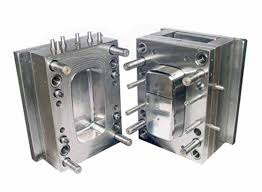China, with its skilled labor and cutting-edge technology, has emerged as a global center for plastic injection molding. When selecting the material for injection molding, understanding the characteristics and uses of various plastics is essential. This information is especially helpful for prototyping since material selection can have a big impact on how well a finished product works. Further in this blog post, we will examine five common materials found in the booming injection molding market in China.

Polypropylene (PP)
polypropylene is a versatile thermoplastic that is very useful and commonly utilized in China's injection molding industry. It provides excellent heat resistance, high fatigue strength, and exceptional chemical resistance. Moreover, it is a lightweight material. Thus, polypropylene is ideal for food containers, medical equipment, and automobile parts. Prototyping can proceed quickly with PP's low cost and ease of molding. Due to its elasticity, designers can test living hinges or snap-fit features without worrying about their breaking. However, keep in mind that PP is not as strong as other polymers, which could compromise the structural integrity of your prototype.
Acrylonitrile Butadiene Styrene (ABS)
Another popular material in China's injection molding market is ABS. It is the best material to use for items that need to be tough because of its great rigidity, dimensional stability, and impact resistance. ABS is frequently utilized in consumer items, car interiors, and electronic housings. It excels in prototyping because of its superior paint adherence and surface finish. This makes it possible for designers to produce visually accurate prototypes that closely resemble the final product. ABS is also appropriate for functional testing under stress because of its strength.
High-Density Polyethylene (HDPE)
HDPE offers remarkable chemical resistance and low moisture absorption. It is renowned for having a high strength-to-density ratio as well as excellent ability to be processed. It is often used in packaging, toys, and outdoor furniture. The low warpage and shrinkage rates of HDPE aid in maintaining dimensional accuracy during prototyping. Because of its resilience to the majority of chemicals, it is ideal for prototyping pieces or containers that will come into contact with different substances.
Polyamide (Nylon)
When great mechanical strength is needed, businesses offering plastic injection molding in China turn to nylon. This material offers excellent wear resistance, high heat resistance, and low friction coefficient. Nylon is perfect for gears, bearings, and under-the-hood parts of automobiles because of these qualities. Due to its strength, nylon can be used to create functioning prototypes that can withstand mechanical testing in real-world settings. With its self-lubricates, prototyping parts with moving elements is made easier and the performance of the finished product is more accurately represented.
Polycarbonate (PC)
In China, the injection molding industry holds polycarbonate in high respect due to its remarkable transparency and resilience to impacts. It also has outstanding dimensional stability and high heat resistance. PC is the perfect material for bulletproof glasses, safety glasses, and headlight lenses for cars. Its clarity during prototyping makes it ideal for translucent parts, enabling designers to see interior components. Its great strength allows the manufacturing of durable prototypes that pass impact tests and drop tests.
To sum up
In China's plastic injection molding sector, prototyping is essential. Before mass production, it allows engineers and designers to test functionality, validate concepts, and spot possible problems. The distinct characteristics of each material affect the behavior of the prototype and aid in forecasting the finished product's performance. For example, a prototype made of PP may show that a part is too flexible and recommend switching to ABS for improved rigidity.
Injection molding companies, with their extensive material inventory and sophisticated gear, frequently provide fast prototyping services in China. Businesses can swiftly iterate through ideas utilizing various materials because of these capabilities, maximizing both form and function. You can ensure your final product satisfies all performance requirements during prototyping by making informed judgments based on your understanding of these common plastics.